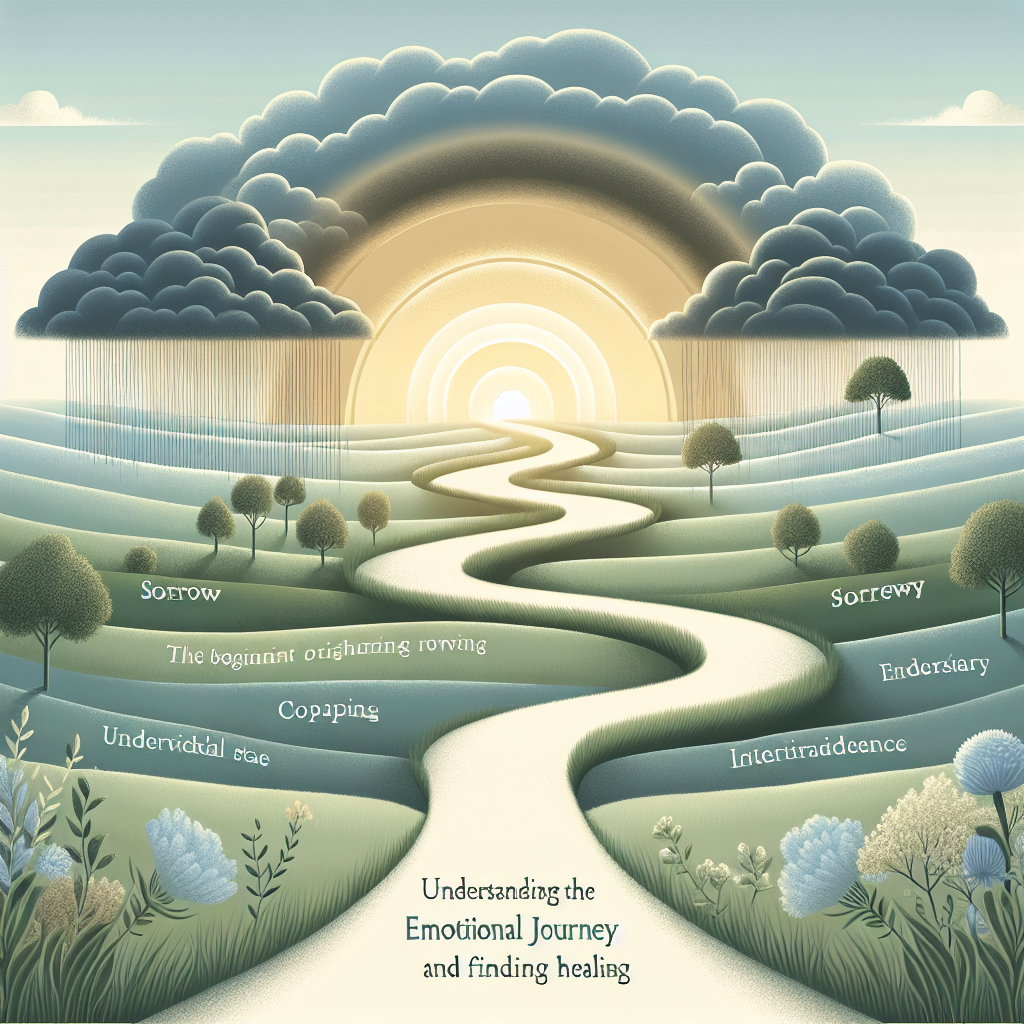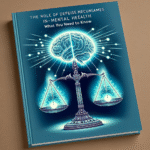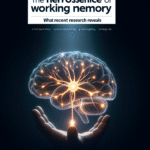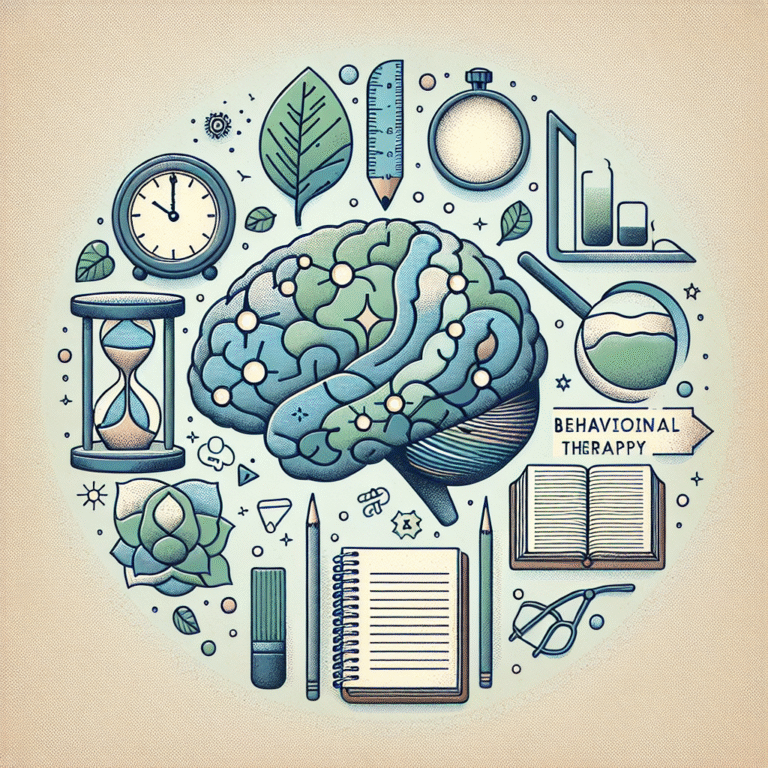
Beyond Grief: Understanding the Emotional Journey and Finding Healing
Introduction
Grief is an inevitable part of life, a universal experience that touches each of us in our own unique ways. In times of loss, it often feels as if the world has dimmed, with shadows of sorrow clouding our hearts and minds. Yet, as we navigate through our pain, we can find paths that lead us beyond grief and towards healing. This journey — though difficult — is not just about enduring hardship but about embracing possibilities. In this article, we’ll delve deep into Beyond Grief: Understanding the Emotional Journey and Finding Healing, offering insights and inspiration for those traversing the rocky terrain of loss.
The Emotional Landscape of Grief
Understanding Grief: A Multifaceted Emotion
Grief isn’t just a singular experience; it’s a complex emotional response that can manifest in various forms. It often involves not only sadness but also anger, confusion, guilt, and profound longing. Elisabeth Kübler-Ross’s five stages of grief — denial, anger, bargaining, depression, and acceptance — are well-known yet often oversimplified. While these stages can help us understand grief, it’s essential to recognize that everyone’s journey is unique.
Case Study: Navigating Grief Through Art
Take the story of Sarah, an artist who lost her father unexpectedly. Initially, she fell into deep depression, struggling with feelings of isolation. However, she found solace in her art, using painting as a medium to express her grief. Through vibrant colors, she channeled her emotions, ultimately transitioning her feelings of loss into a collective healing experience. Sarah’s journey exemplifies how creative expression can aid in moving beyond grief into a space of healing and reconstruction.
The Journey Beyond Grief
The Role of Acceptance in Healing
Acceptance is a critical step in the emotional journey of grief. It doesn’t mean forgetting or moving on but rather acknowledging the loss and allowing ourselves to feel the associated emotions fully. Acceptance involves understanding that while the pain may never entirely disappear, it will transform over time.
Tools for Transformation: Journaling and Reflection
Engaging in reflective practices such as journaling can be instrumental in navigating grief. Writing provides a private space to articulate feelings and thoughts that might otherwise remain unexpressed.
Table 1: Benefits of Journaling in Grief Processing
| Benefit | Description |
|---|---|
| Clarity of Thought | Helps organize feelings, making them easier to understand |
| Emotional Relief | Provides an outlet for pent-up emotions |
| Tracking Progress | Allows individuals to see how their feelings evolve |
Finding Support: The Importance of Community
Support Groups: Connecting with Others
Connecting with others who have experienced similar losses can foster understanding and comfort. Support groups create communities where individuals can share their stories, offering both solace and insight.
Case Study: The Healing Power of Community
Consider the example of John, who lost his sister to illness. Initially isolated in his grief, he hesitantly joined a support group. Over time, he found that sharing his experiences with others helped him process his emotions more constructively. This communal space allowed John to transform personal sorrow into collective healing, illustrating that moving beyond grief often requires support and connection.
The Physical Aspects of Grief
Mind-Body Connection: How Grief Affects Us Physically
Grief can have profound physical effects on the body. Stress and emotional turmoil can manifest as fatigue, headaches, and even long-term health issues. Acknowledging and addressing these symptoms is vital for holistic healing.
Table 2: Common Physical Symptoms of Grief
| Symptom | Description |
|---|---|
| Fatigue | General tiredness or lethargy |
| Gastrointestinal Issues | Nausea, loss of appetite, or pain |
| Sleep Disturbances | Insomnia or excessive sleeping |
Strategies for Emotional Healing
Embracing Mindfulness and Meditation
Mindfulness practices such as meditation can significantly help individuals cope with grief. By anchoring ourselves in the present moment, we can mitigate the overwhelming nature of our thoughts and feelings. The mere act of being present allows us to process emotions without judgement.
Creative Outlets: Finding Unconventional Healing
Alongside traditional therapies and practices, creative outlets such as music, dance, or writing can facilitate emotional expression. They provide channels for grief to flow out, enabling individuals to articulate feelings in symbolic rather than literal ways.
Reconstructing Life After Loss
Setting New Goals and Intentions
As we move beyond grief, it’s essential to envision a life that integrates the loss without allowing it to dominate our existence. Setting new goals can foster a sense of purpose and direction.
Case Study: Rebuilding After Loss
After losing her child, Lisa felt utterly lost. With the help of therapy and support groups, she gradually set small, achievable goals for herself, such as running a local charity event for children’s health. This active engagement in life allowed Lisa to honor her child’s memory while progressively reconstructing her identity.
Living with Loss: A New Normal
Redefining Relationships with Memories
As we journey through grief, it’s crucial to redefine our relationship with our memories. Instead of viewing memories solely as sources of pain, we can learn to cherish them as commemorations of love and connection.
Developing Resilience
Resilience plays a critical role as we navigate grief. Building resilience doesn’t mean eliminating pain but rather learning to adapt to it. This adaptability can cultivate a new perspective on life, allowing individuals to find joy even amidst sorrow.
Conclusion
The journey beyond grief can be long and winding, filled with emotional highs and lows. However, by understanding the intricacies of grief and actively seeking healing, we can transform our sorrow into resilience and growth. Remember, you are not alone in this journey. Each step, whether forward or backward, is part of the process. Embrace your unique journey, practice self-compassion, and hold on to hope.
FAQs
1. What does it mean to "move beyond grief"?
Moving beyond grief involves acknowledging your loss and processing the associated emotions while finding ways to heal and rebuild a fulfilling life without the deceased.
2. Is it normal to feel angry when grieving?
Yes, anger is a natural part of the grieving process. It’s essential to allow yourself to feel this emotion and find constructive ways to express it.
3. How can I support a friend who is grieving?
Offering a listening ear, being present, and simply acknowledging their loss can be profoundly supportive. Avoid trying to "fix" their grief or rush them through it.
4. Should I seek professional help for grief?
If you find that your grief is overwhelming or persistent, seeking help from a counselor or therapist who specializes in grief can be beneficial.
5. Can grief ever completely go away?
While the intensity of grief may lessen over time, loss may never be fully forgotten. Instead, individuals learn to integrate their experiences into their lives as they find a new normal.
By embracing the intricate journey of grief and seeking ways to heal, you can transform your pain into a source of strength and hope, finding solace in the knowledge that life continues beyond grief.

















